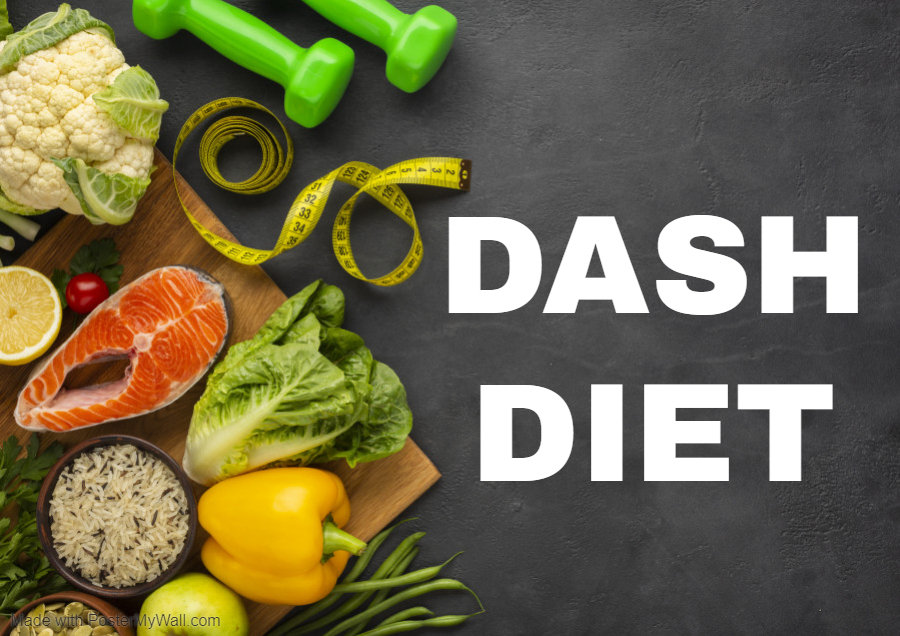5th floor, Lakshmi Sharada Arcade,
6th Main Road, No 251,
17th Cross Road,Sector 7,
HSR Layout,Bangalore,
Karnataka-560102

High blood pressure is affecting millions of people in India and this number is on an alarming rise. An article published in the “Journal of human hypertension” (1) in Sept 2018 reports that 207 million persons (men 112 million, women 95 million) have hypertension in India and Indian states with greater urbanization, human development and social development have more hypertension.
Medicines are effective in treating pre-hypertensive and hypertensive patients, but lifestyle changes are also very important. Salt restriction, alcohol moderation, weight loss and following the DASH diet can help decrease systolic blood pressure (2).
DASH (Dietary Approaches to Stop Hypertension) is recommended for individuals who are looking to prevent or treat hypertension, and also reduce their risk of heart diseases.
The DASH diet features menus with plenty of vegetables, fruits, and low-fat dairy products, as well as whole grains, fish, poultry and nuts. It offers limited portions of red meats, sweets, and sugary beverages.
The diet also helps to consume nutrients like potassium, calcium, and magnesium that help to lower blood pressure.
The regular DASH diet program encourages no more than 1 teaspoon (2,300 mg) of sodium per day, which is in line with most national guidelines. The lower-salt version of the diet recommends no more than 3/4 teaspoon (1,500 mg) of sodium per day
WHAT TO EAT ON A DASH DIET?
The diet recommends specific servings of different food groups. The number of servings you can eat depends on how many calories you consume. Below is an example of a 2000 calorie DASH diet.
Whole Grains: 6–8 Servings per Day- This will include whole wheat, whole grain breakfast cereals, whole-grain bread, oat, quinoa, and brown rice
Vegetables: 4-5 servings per day- Tomatoes, carrots, broccoli, sweet potatoes, greens, and other vegetables are full of fiber, vitamins, and such minerals as potassium and magnesium.
Fruits: 4-5 servings per day- Following this diet will include eating a lot of fruits daily. Many fruits need little preparation to become a healthy part of a meal or snack. Like vegetables, they're packed with fiber, potassium, and magnesium and are typically low in fat. Fruits that can be included in this diet are apples, pears, peaches, banana and even fruits like pineapple and mango.
Dairy Products: 2-3 servings per day- Milk, yogurt, cheese, and other dairy products are major sources of calcium, vitamin D and protein. Dairy consumed in the diet is of the low-fat type
Lean chicken and fish: Not more than 160 grams of lean cuts of chicken (breast) or fish or 6 egg whites daily- Try and include heart-healthy fish, such as salmon, herring and tuna. These types of fish are high in omega-3 fatty acids, which are healthy for your heart.
Nuts, Seeds & Legumes: 4-5 servings per week- A handful of nuts and seeds like peanut, almonds, walnuts, hazelnuts, sunflower seeds or, ½ cup kidney beans, peas, kidney beans and other foods from this family are good sources of magnesium, potassium, and protein. They're also full of fiber and phytochemicals, which are plant compounds that may protect against some cancers and cardiovascular disease.
Fats and oils: 2-3 servings per day- Dash diet recommends consumption of vegetable oils like sunflower, corn or olive. It also recommends low-fat mayonnaise and light salad dressing.
Added sugars: less than 5 (1 teaspoon) servings per week- following the DASH diet does not mean completely eliminating intake of sugars, just keep it to the minimum.
It's possible to align your current diet with the DASH diet. Simply eat more fruits and vegetables, choose low-fat products as well as lean proteins and limit your intake of processed, high-fat and sugary foods.
The dash diet is more effective at lowering blood pressure when it is combined with regular physical activity (3). It's recommended to do 30 minutes of moderate activity most days to see better blood pressure control and this combination may also achieve some weight loss.
Remember, healthy eating isn't an all-or-nothing proposition. What's most important is that, on average, you eat healthier foods with plenty of variety — both to keep your diet nutritious and to avoid boredom or extremes. And with the DASH diet, you can have both.
References: